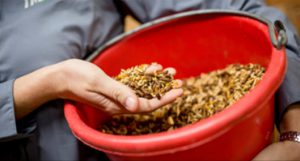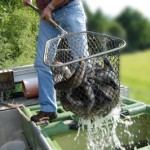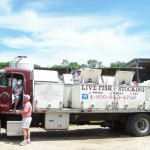 Feeding horses correctly and safely often appears to be enormously complicated for the horse owner. Horses are unique in the livestock world, and cannot be fed the same way as cattle, hogs sheep, or any other livestock species. However, following a few guidelines will go a long way toward ensuring that your horse’s nutrient requirements are met without increasing the risk of the digestive disturbances that seem to plague many horses. Browse our feeding management guidelines below.
Feeding horses correctly and safely often appears to be enormously complicated for the horse owner. Horses are unique in the livestock world, and cannot be fed the same way as cattle, hogs sheep, or any other livestock species. However, following a few guidelines will go a long way toward ensuring that your horse’s nutrient requirements are met without increasing the risk of the digestive disturbances that seem to plague many horses. Browse our feeding management guidelines below.
Feed horses according to lifestyle
Horses require different amounts of nutrients according to their lifestyle. The horse owner must be sure that each horse receives a total diet that meets the needs of that particular horse. Purina® Horse Feeds are designed to meet the nutritional needs of various classes of horses, such as Omolene #100® Horse Feed for pleasure horses, Omolene #200® Horse Feed for performance horses, Omolene #300® Horse Feed for growing horses, and Equine Senior® Horse Feed for older horses.
How much feed?
In order to feed the correct amount to a horse, the owner must know the horse’s body weight. To determine body weight, one can use a livestock scale, a weight tape (such as those available through Purina Dealers) or an equation, such as: BW(lbs) = Heartgirth (in) x Heartgirth (in) x Body length (in) divided by 330. (The heartgirth is measured as the circumference over the withers and around the barrel; the body length is measured from the point of the shoulder to the point of the buttocks.)
Once the horse’s body weight is determined, then the owner should use the guidelines on the bag of feed, or use the feeding calculator found on the Purina Website (http://horse.purinamills.com) to calculate how many pounds of feed and hay to feed each horse.
Measure feed by weight, not volume.
A 3-lb coffee can of oats is not the same amount of feed as a 3-lb coffee can of corn! The can may hold 2-3 lbs of oats, while the can of corn may be 4-5 lbs. Further, since corn is more calorie rich than oats, the can of corn may contain 2-3 times the energy as the can of oats. Any time a horse owner changes feed, he or she must weigh the can of feed to make sure the horse gets fed the same amount of feed every meal. Plus, every different batch of corn or oats may be a different weight. A can of Strategy® Professional Formula GX Horse Feed or Omolene #200® Horse Feed will weigh the same each time, however, sometimes the 3-lb coffee cans are different sizes! Another option is to use a pre-measured scoop.
Do not overfeed grain.
The horse has a very small stomach in relation to its total size, and feeding too much grain in one meal can overload the stomach and cause problems such as colic or laminitis (founder). A general rule of thumb is to feed no more than .5% of the horse’s body weight in grain per meal, or no more than 5 pounds of grain per meal for a 1000- pound horse.
Do not dilute balanced rations.
Purina’s equine nutritionists formulate Purina® Horse Feeds with precise, correct nutrient balances to meet the requirements of the various classes of horses. Many horse owners then dilute or “cut” these balanced feeds with a cereal grain (usually oats), thereby changing the nutrient balance and decreasing the feed’s nutritional value for horses. For those horse owners wishing to feed oats, corn or unfortified grain mixes, Nature’s Essentials® Enrich 32® Supplement is a concentrate pellet that can be used to supplement grains. Strategy® Professional Formula GX Horse Feed, Omolene #100®, #200®, #300® etc. are designed to be fed only with hay or grass.
Do not supplement balanced rations.
When a horse owner feeds a Purina® Horse Feed, it is already balanced to meet the horse’s nutritional needs and contains sufficient amount of all the necessary proteins and amino acids, vitamins and minerals. If an owner then top-dresses a protein, vitamin, or mineral supplement on the ration, it can cause serious nutrient imbalances, and possibly toxicities.
Feed adequate roughage.
Horses require at least 1-1.5% of their body weight per day of roughage in their diets. Feeding adequate amounts of high quality roughage can prevent many digestive disturbances as well as behavior problems. When providing a feed such as Equine Junior® Horse Feed, Senior® or Adult® Horse Feed, the roughage is included in the pellet, so all the horse’s nutritional requirements are met when these complete feeds are fed as recommended. However, it may be beneficial to supply some roughage to decrease the risk of horses developing boredom vices, especially when exercise is limited.
Use only top quality feeds.
Avoid dust and mold, and keep the feed manger clean. Proper feed storage reduces feed waste. Horses’ digestive systems are not equipped to deal with dust, mold, etc., so poor quality hay or grain will not be digested efficiently, and may cause health problems for the horse. The grains used in Purina® Horse Feeds must pass stringent quality tests before being utilized in the feeds, thereby ensuring only clean, high quality ingredients in each bag of Purina® Horse Feed.
Feed at the same time every day.
Horses that are fed on a consistent schedule are less likely to go off their feed or develop undesirable stall habits (vices). Horses that are fed on inconsistent schedules may get hungry and bolt their feed, possibly resulting in digestive disorders. Also, spacing meals evenly throughout the day is healthier for the equine digestive tract.
Properly manage group-fed horses.
If horses must be fed as a group, use individual feeders spread far apart, put out extra feeders, and make provisions for timid horses (low in the pecking order) to ensure that they have the opportunity to eat adequately. However, the only way to ensure that each individual meets its nutritional requirements is to feed separately.
Avoid sudden changes.
Consistency is one important factor in reducing the chance of digestive upsets in a horse. Changes in types of feed should be made gradually (4-7 days for small changes, up to three weeks for radical changes).
Provide clean, fresh water.
Horses should have access to clean, fresh water at all times, except when the horse is extremely hot. The hot horse should receive plenty of water, but only a few swallows at a time until the horse is cool.
Exercise horses regularly.
Daily exercise helps maintain regular eating habits, desirable stall behavior and general health.
Check teeth regularly.
Horses need routine dental care. Sharp points can develop on the teeth, which can cause problems with eating and also performance, as they may interfere with the action of the bit. The veterinarian can remove the sharp points by floating (rasping).
Practice parasite control measures.
Many digestive disturbances are caused by parasite infestation. Horse owners should practice parasite control measures such as a proper de-worming program, harrowing and/or rotating pastures, proper manure disposal, etc.
Keep an eye on horses’ droppings.
Changes in consistency, color, odor or composition of feces may indicate a digestive disorder.
Practice routine veterinary maintenance.
In order for a horse to get the most out of its nutrition program, it must be in good health. Regular vaccinations, deworming, etc. are all essential elements of a good overall wellness program for the horse.
By Katie Young Ph.D., Consulting Equine Nutritionist, Purina Mills, LLC


